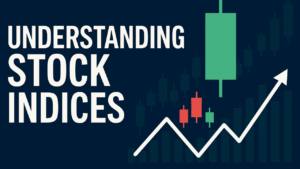 Understanding Stock Indices (S&P 500, Dow, Nasdaq)
Understanding Stock Indices (S&P 500, Dow, Nasdaq)
When you hear that “the market is up” or “stocks are down today,” chances are those reports refer to stock market indices like the S&P 500, Dow Jones Industrial Average, or Nasdaq Composite. Understanding Stock Indices is an essential tool for investors, financial analysts, and everyday people trying to understand what’s happening in the market.
But what exactly are stock indices? Why are they so important? And what’s the difference between them?
What Is a Stock Index?
A stock index (plural: indices) is a statistical measure that tracks the performance of a group of stocks. Think of it like a snapshot of the market—it gives you a simplified view of how a portion of the market is performing at any given time.
Indices are made up of selected stocks based on certain criteria like:
- Company size (market cap)
- Industry sector
- Trading volume
They help investors:
- Benchmark their portfolios
- Analyze market trends
- Track economic health
Understanding Stock Indices: Major U.S. Stock Indices Explained
📈 1. S&P 500 (Standard & Poor’s 500)
- Tracks: 500 of the largest publicly traded U.S. companies
- Sectors Represented: Technology, healthcare, energy, financials, and more
- Weighting: Market-cap weighted (larger companies have more influence)
- Use: Widely considered the best overall representation of the U.S. stock market
Example Companies: Apple, Microsoft, Amazon, Johnson & Johnson, JPMorgan Chase
Many index funds and ETFs track the S&P 500, making it a go-to choice for passive investors.
📈 2. Dow Jones Industrial Average (DJIA)
- Tracks: 30 large, established U.S. companies (a.k.a. “blue chips”)
- Weighting: Price-weighted (stocks with higher prices have more influence)
- Focus: More industrial and traditional companies
- Use: Often referenced in headlines and news reports as the “Dow”
Example Companies: Coca-Cola, Boeing, McDonald’s, Goldman Sachs, Chevron
Because it includes just 30 companies, it doesn’t represent the broader market as fully as the S&P 500.
📈 3. Nasdaq Composite
- Tracks: Over 3,000 stocks listed on the Nasdaq exchange
- Focus: Heavy concentration in technology and growth stocks
- Weighting: Market-cap weighted
- Use: A barometer for the tech sector and innovation-driven businesses
Example Companies: Apple, Nvidia, Meta (Facebook), Tesla, Alphabet (Google)
The Nasdaq tends to be more volatile, especially during tech booms and busts.
Other Notable Indices
- Russell 2000: Tracks 2,000 small-cap U.S. companies; often used to measure the health of smaller businesses.
- Wilshire 5000: Tracks nearly every publicly traded U.S. stock; the most comprehensive U.S. index.
- NYSE Composite: Includes all common stocks listed on the New York Stock Exchange.
Understanding Stock Indices: Why Stock Indices Matter
- Market Sentiment: Indices give a quick read on how the market is feeling—bullish or bearish.
- Benchmarking Tool: Investors use indices to compare performance (e.g., “Did my portfolio beat the S&P 500 this year?”).
- Passive Investing: Index funds allow investors to buy into an entire market index for diversification.
- Economic Indicator: Indices reflect broader economic trends, including investor confidence, inflation, and employment conditions.
How Are Index Values Calculated?
Each index uses a specific formula. The two most common methods are:
- Market-Cap Weighted: Companies with larger market caps have a bigger impact on the index (e.g., S&P 500, Nasdaq).
- Price Weighted: Companies with higher stock prices carry more weight (e.g., Dow Jones).
This means that a stock split, for example, can affect the Dow more than the S&P 500—even if the company’s market value doesn’t change.
✅ FAQ: Understanding Stock Indices
1. Why does the S&P 500 matter more than the Dow for many investors?
Because it includes 500 companies across all sectors, the S&P 500 offers a broader and more accurate picture of the U.S. economy than the Dow’s 30 companies.
2. Is it better to invest in the S&P 500 or Nasdaq?
That depends on your goals. The S&P 500 is more diversified, while the Nasdaq focuses more on tech and high-growth companies, which may be more volatile.
3. Can I invest directly in a stock index?
You can’t invest directly in an index, but you can buy index funds or ETFs that replicate its performance.
4. Why do the Dow and S&P sometimes move in different directions?
Because they track different companies and use different weighting methods, it’s possible for one index to rise while the other falls.
5. Are indices only useful for U.S. markets?
No. There are many global indices like the FTSE 100 (UK), DAX (Germany), and Nikkei 225 (Japan) that help track international markets.